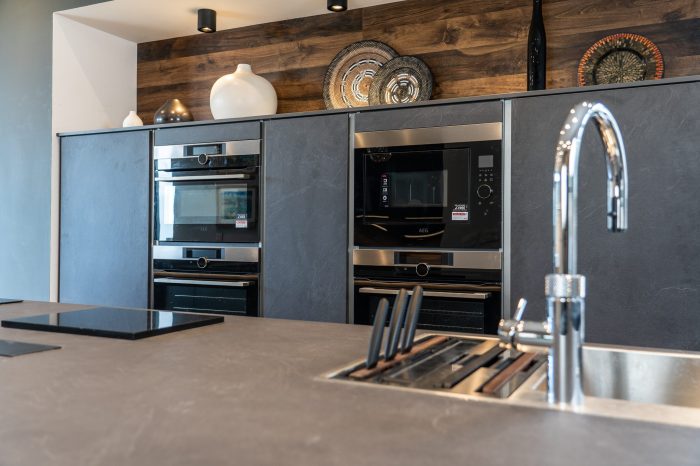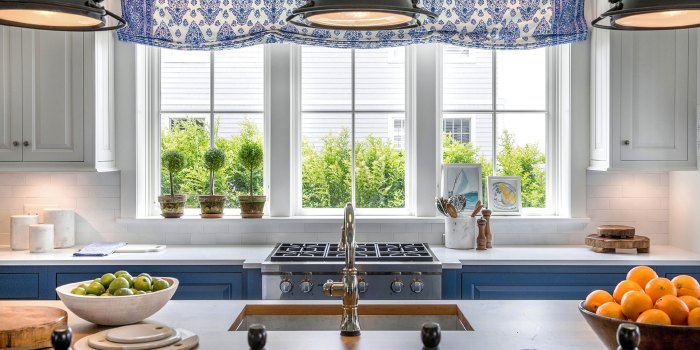Potters Interiors: Small Changes That Make a Big Impact
Potters Interiors: Small Changes That Make a Big Impact sets the stage for this enthralling narrative, offering readers a glimpse into a story that is rich in detail and brimming with originality from the outset.
Exploring the importance of small changes in interior design, the role of color and texture, furniture arrangement strategies, and the impact of lighting and decor elements will shed light on how subtle adjustments can create a significant difference in any space.
Importance of Small Changes in Interior Design

Small changes in interior design can have a significant impact on the overall look and feel of a space. These subtle adjustments can completely transform a room, creating a more inviting and aesthetically pleasing environment.
Examples of Small Changes
- Changing the color scheme: Painting a room a different color can instantly change the mood and atmosphere.
- Updating hardware: Swapping out old doorknobs and handles for modern ones can give a room a fresh new look.
- Introducing new textiles: Adding throw pillows, rugs, or curtains can add texture and warmth to a space.
- Repositioning furniture: Moving around furniture can improve flow, functionality, and visual appeal.
Psychology Behind Small Changes
Small changes in interior design can influence perception and mood in a space by creating a sense of novelty and freshness. They can also help evoke certain emotions and feelings based on colors, textures, and layout.
Utilizing Color and Texture

Color and texture are essential elements in interior design that can significantly impact the overall look and feel of a space. By making small changes to the color palette and adding different textures, you can transform a room without a complete overhaul.
Here are some tips on how to effectively incorporate color and texture changes in interior design:
Incorporating Color and Texture Changes
- Start by choosing a base color for the room and then layering different shades of that color to create depth and visual interest.
- Consider the mood you want to evoke in the room - warm colors like reds and oranges can create a cozy atmosphere, while cool colors like blues and greens can make a space feel more serene.
- Experiment with different textures such as velvet, linen, or wood to add dimension to the room and create a tactile experience.
- Use accent colors sparingly to add pops of color and draw attention to specific areas or elements in the room.
Enhancing Aesthetic with Color and Texture Combinations
- Pairing neutral colors like beige and gray with bold accents like navy or mustard yellow can create a sophisticated and modern look.
- Mixing different textures like smooth leather with rough jute or silk with wool can add contrast and visual appeal to a room.
- Combining complementary colors, such as blue and orange or purple and yellow, can create a harmonious and balanced color scheme.
- Don't be afraid to mix patterns and textures - just make sure to vary the scale and intensity to create a cohesive look.
Furniture Arrangement and Layout
Rearranging furniture can completely transform the look and feel of a room. By optimizing the layout, you can create a more functional and visually appealing space that enhances the overall design of the room.
Optimizing Furniture Layout
When it comes to optimizing furniture layout, there are a few key strategies to keep in mind:
- Consider the function of the room: Before rearranging furniture, think about how the room is used and what activities take place in that space. This will help you determine the best layout to support those functions.
- Focus on flow and balance: Arrange furniture in a way that allows for easy movement throughout the room. Make sure there is a good balance of furniture pieces on each side of the room to create a harmonious and visually appealing layout.
- Define zones: Create distinct areas within the room for different activities, such as a seating area, a reading nook, or a workspace. This will help define the purpose of each area and make the room feel more organized.
Importance of Flow and Balance
Flow and balance are essential aspects to consider when making changes to furniture arrangement. A well-balanced layout not only looks visually pleasing but also ensures that the room feels comfortable and inviting. Here are some tips to achieve optimal flow and balance:
- Allow for clear pathways: Avoid blocking pathways with furniture to create a smooth flow and easy navigation within the room.
- Use furniture of varying heights: Incorporating furniture of different heights adds visual interest and creates a dynamic look in the room.
- Consider the focal point: Arrange furniture around a focal point, such as a fireplace, a large window, or a piece of artwork, to create a cohesive and inviting space.
Lighting and Decor Elements

Lighting plays a crucial role in transforming the ambiance of a room, creating a welcoming and cozy atmosphere. By strategically using lighting fixtures and decor elements, you can make small yet impactful changes that enhance the overall design of the space.
Types of Lighting Fixtures
- Chandeliers: These elegant fixtures can serve as a focal point in a room, adding a touch of sophistication and style.
- Pendant Lights: Perfect for task lighting or adding a decorative element, pendant lights come in various styles and sizes to suit different spaces.
- Wall Sconces: Ideal for creating ambient lighting and adding a decorative touch to walls, wall sconces can be positioned strategically to enhance the overall design.
Decor Elements for Lighting Enhancement
- Mirrors: Placing mirrors strategically can help reflect light and make a room appear brighter and more spacious.
- Candles: Adding candles in decorative holders can create a warm and inviting atmosphere, especially during evenings or special occasions.
- Lampshades: Choosing the right lampshades can complement the overall decor style and create a soft, diffused lighting effect.
End of Discussion
In conclusion, Potters Interiors: Small Changes That Make a Big Impact showcases the transformative power of minor adjustments in interior design, proving that even the smallest details can make a lasting impression. Dive into the world of design possibilities and unleash the potential of your space with these insightful tips and tricks.
Frequently Asked Questions
How do small changes impact the overall look of a space?
Small changes can shift the entire ambiance of a room, creating a fresh and updated feel without major renovations.
What are some effective color and texture tips for interior design changes?
Incorporating a mix of complementary colors and textures can add depth and visual interest to a room, enhancing its overall appeal.
Why is furniture arrangement important in interior design?
Optimizing furniture layout can improve functionality, flow, and balance within a space, ultimately impacting how it is perceived and used.
How does lighting play a role in transforming room ambiance?
Proper lighting can set the mood, highlight design elements, and create a welcoming atmosphere, making it a crucial aspect of interior design changes.




